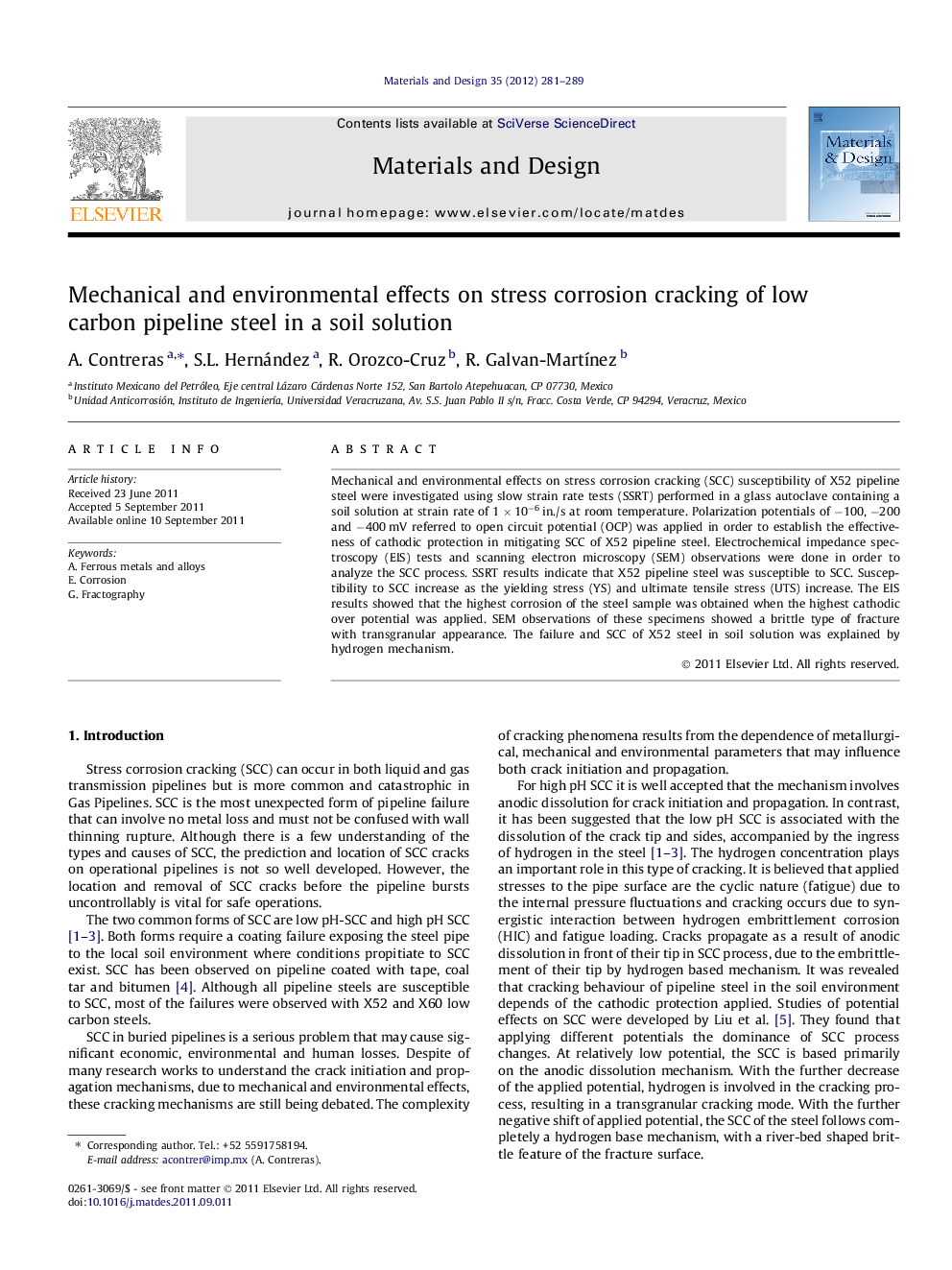| Article ID | Journal | Published Year | Pages | File Type |
|---|---|---|---|---|
| 830940 | Materials & Design (1980-2015) | 2012 | 9 Pages |
Mechanical and environmental effects on stress corrosion cracking (SCC) susceptibility of X52 pipeline steel were investigated using slow strain rate tests (SSRT) performed in a glass autoclave containing a soil solution at strain rate of 1 × 10−6 in./s at room temperature. Polarization potentials of −100, −200 and −400 mV referred to open circuit potential (OCP) was applied in order to establish the effectiveness of cathodic protection in mitigating SCC of X52 pipeline steel. Electrochemical impedance spectroscopy (EIS) tests and scanning electron microscopy (SEM) observations were done in order to analyze the SCC process. SSRT results indicate that X52 pipeline steel was susceptible to SCC. Susceptibility to SCC increase as the yielding stress (YS) and ultimate tensile stress (UTS) increase. The EIS results showed that the highest corrosion of the steel sample was obtained when the highest cathodic over potential was applied. SEM observations of these specimens showed a brittle type of fracture with transgranular appearance. The failure and SCC of X52 steel in soil solution was explained by hydrogen mechanism.
► Mechanical and environmental effects on SCC of X52 steel were investigated. ► Slow strain rate tests (SSRT) were performed in a soil solution (NS4). ► Different levels of polarization potentials were applied to mitigating SCC. ► SSRT results indicate that X52 pipeline steel was susceptible to SCC. ► SCC susceptibility increase as the yielding and ultimate tensile stress increase.
